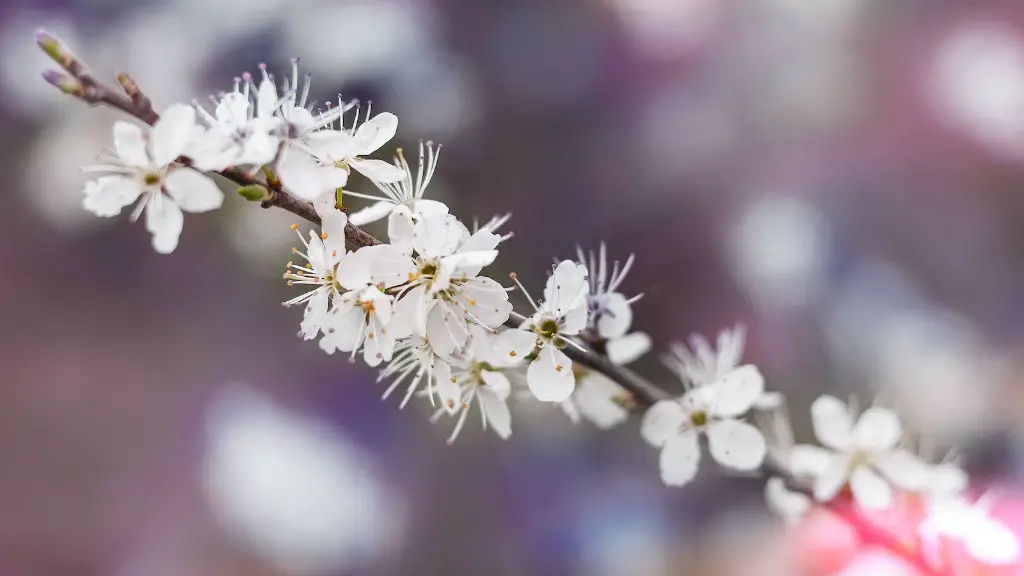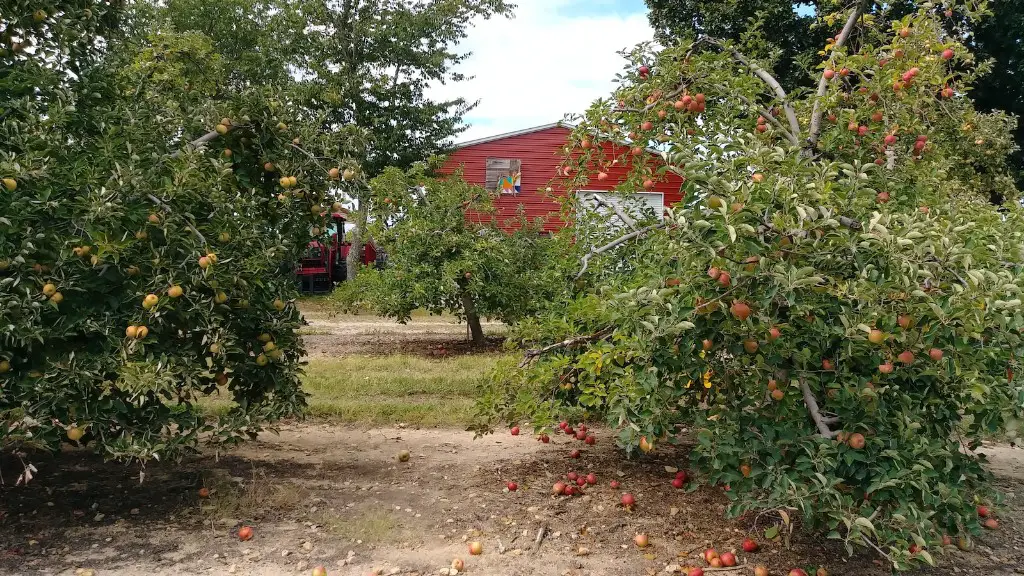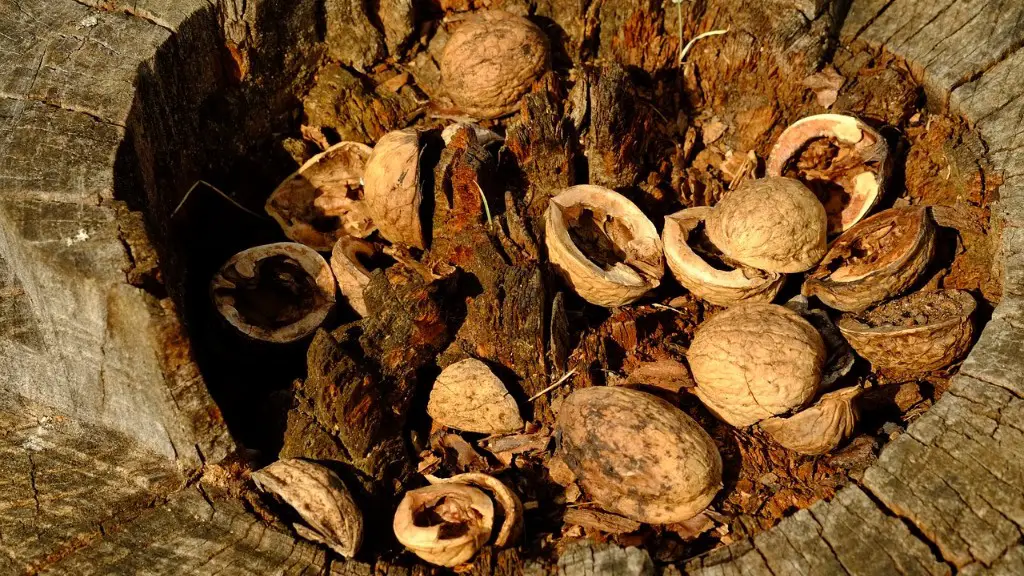When you’re choosing an apple tree to buy, you have a lot of options to consider. First, think about where you’ll be planting the tree. Different apple trees perform better in different soil and climate types, so pick one that’s well-suited to the area in which you’re planting it. Next, consider the types of apples you want the tree to produce. If you want to make apple pies or apple sauce, you’ll need a tree that produces sweet apples; if you want to make cider or hard apple juice, you’ll need a tree with sour apples. The maturity dates for different apple trees also vary, so consider whether you would like harvest early, mid-season, or late-season apples.
You’ll also need to consider how large the tree will get. Smaller, dwarf varieties can fit into almost any backyard, while large varieties will require a bit more space. When choosing the size of the tree, keep in mind that if you don’t have enough space, the tree may not have enough room to grow, which can limit fruit production. So, choose a size that will fit your backyard and be able to produce enough fruit.
Finally, consider the type of rootstock you’d like. Most apple tree varieties are grafted onto rootstocks, so you’ll have to decide which type you’d like to use. Some rootstocks produce bigger, healthier trees, while others produce disease-resistant trees. There are other benefits of different rootstocks, so consider which one you’d like to use when you’re looking for an apple tree.
Types of Apple Trees
When picking an apple tree, it’s a good idea to familiarize yourself with the different types of apple varieties available. There are a few major types of apples, each of which has many varieties of trees available: yellow apples, red apples, and green apples. Yellow apples are usually sweeter than red apples, while green apples are usually more tart. There are hundreds of varieties of these apples available, so you can pick the one that will work best for your needs.
When choosing an apple tree, it’s also a good idea to read up on the environmental needs of the specific tree you’re choosing. Different apple trees may need different levels of sunlight, water, or soil types, so it pays to know what type of environment the tree you’re buying needs. Furthermore, some apple trees are more prone than others to pests or diseases, so read up and make sure you’re getting a tree that’s resistant to the pests or diseases most common in your area.
Finally, when you’re buying an apple tree, make sure you get one of high quality. Look up the variety you’re getting and make sure it has a good reputation and comes from a reputable nursery. Poor quality apple trees may not produce as much fruit, or have a shorter lifespan, so if you’re spending the money and effort to purchase, plant, and maintain an apple tree, you want to make sure it’s going to be a good one.
Pruning Apple Trees
Pruning is an important part of growing any type of apple tree, and it’s important to know when and how to prune yours. There are two main times for pruning: dormant pruning in late winter, and summer pruning. Dormant pruning should always be done in late winter, when the tree is resting and not actively growing. During this time, you can remove any dead wood and shape the tree. Summer pruning, meanwhile, should focus on removing any water sprouts and suckers, as well as thinning any overcrowded branches.
When pruning an apple tree, it’s a good idea to start with removing the dead wood first. Then, shape the tree according to the type of apple tree you want – whether you want a low, spreading tree, or a tall and upright tree. Once you’ve shaped the tree, you can begin thinning it, removing any overlapping or congested branches. Finally, look out for any water sprouts, which are shoots that grow perpendicular to the tree, as well as any suckers, which are shoots that grow off the root system.
When you’re pruning an apple tree, always make sure to use sharp pruning shears. Remove the branches in a way that evenly distributes the weight of the tree, and be sure to avoid cutting into the “collar” of the branch, where the branch attaches to the main trunk. Finally, make sure you’re wearing protective clothing and have access to a ladder if you’re pruning higher branches.
Propagating Apple Trees
Propagating apple trees is a great way to get multiple apple trees from one tree. There are two main methods of propagating apple trees: grafting and rooting. Grafting involves taking a branch from one apple tree and attaching it to the rootstock of another. Rooting, on the other hand, involves taking a cutting of an apple tree and using it to grow a new tree.
For both grafting and rooting, you may need to apply a rooting or grafting hormone. This hormone helps the cutting or branch form a callus, which is an area of hard, protective tissue that forms around the graft or cutting and helps the tree heal. You can find these hormones at most garden stores or online.
When propagating an apple tree, you’ll need to choose the right spot and use the correct materials. Make sure the spot you’re propagating in has the right amount of sunlight and drainage for the particular apple tree you’re working with. You’ll also need to make sure the cutting or branch is clean and has no visible diseases or pests. Then, you’ll need to use good quality grafting or rooting materials, either purchased in a store or homemade, to create a strong and secure bond between the scion and the rootstock.
Harvesting Apple Trees
Knowing when and how to harvest apples from your tree is key to getting the best possible fruit. Apples should be harvested when they’re ripe, as this is when they’re at their most flavorful. The best way to know if apples are ripe is to look for the color of the apple, as the color of ripe apples varies depending on the variety. You should also give the apple a gentle twist to test for ripeness.
When harvesting apples from your tree, make sure to use tools that won’t damage the fruit. Long-handled picking bags or ladders and poles are the best way to access the apples without causing damage. Careful handling of the apples is also important to ensure that they don’t get bruised or squashed as you’re collecting them. It’s also important to collect all of the fallen apples, as they can be a source of disease or pests if they’re left on the ground.
Finally, when harvesting apples, it’s a good idea to pick them in the right order. Start by picking the apples on the outside of the tree first, then move inwards in a clockwise pattern until you reach the center. This way, you won’t miss any of the apples, and you’ll also be able to do a thorough job of pruning the tree afterwards. Once the apples are harvested, it’s important to store them correctly and use them as soon as possible, as ripe apples tend to spoil quickly.
Storing Apples from an Apple Tree
Once you’ve harvested the apples from your apple tree, you’ll need to store them for later use. Apples need to be stored properly in order to stay fresh and flavorful for as long as possible. The best way to store apples is in a cool, dry place. You can store them in the refrigerator, in a cool basement, or even in the garage. They should be stored in containers or bags that are sealed to ensure they don’t dry out.
When storing apples, try to keep them away from strong-smelling items, as apples are sensitive to odors. Additionally, it’s important to separate out any ripe apples from those that aren’t fully ripe yet; ripe apples tend to emit gases that can speed up the ripening of other apples. Finally, make sure you label the containers with the variety and date you harvested the apples, so that you’ll know what type of apples you have and can plan when to use them.
Apples harvested from your apple tree can last for several months if stored properly. Make sure you check your apples periodically to make sure they’re still fresh, and remove any apples that look spoiled. If well-stored, your apples should stay fresh until you’re ready to use them.


